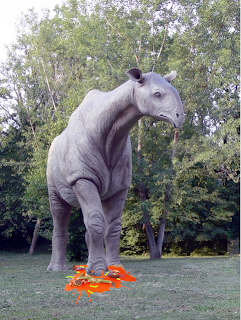In Madagascar's Ankarana reserve lies a treacherous place known as the Tsingy rocks. The Tsingy rocks are an enormous limestone formation created over millions of years through the reaction of acidic rain with calcium carbonate that slowly wears away the rock leaving behind razor sharp ridges.
There are varying reports on the Malagasy meaning of "Tsingy", they range from "Singing," due to the wind songs produced when fast moving air passes through the rocks, to "Jesus Horatio Christ my feet are bleeding!"
A network of underground rivers flow through the caverns beneath the Tsingy rocks. In these dark caves is where a subspecies of the Nile crocodile lives. According to local villagers the Tsingy crocs are enormous, blind, and especially "bitey."
Due to a lifelong fear of the dark (and enormous blind crocodiles,) I have no plans to visit the Tsingy crocodile caves, but according to the Madagascar Tourism Office they are "an excellent place for family rafting adventures with unwanted wives and children."
-RVB
 |
| Don't cry, Poppet, just close your eyes and think of England! |


















